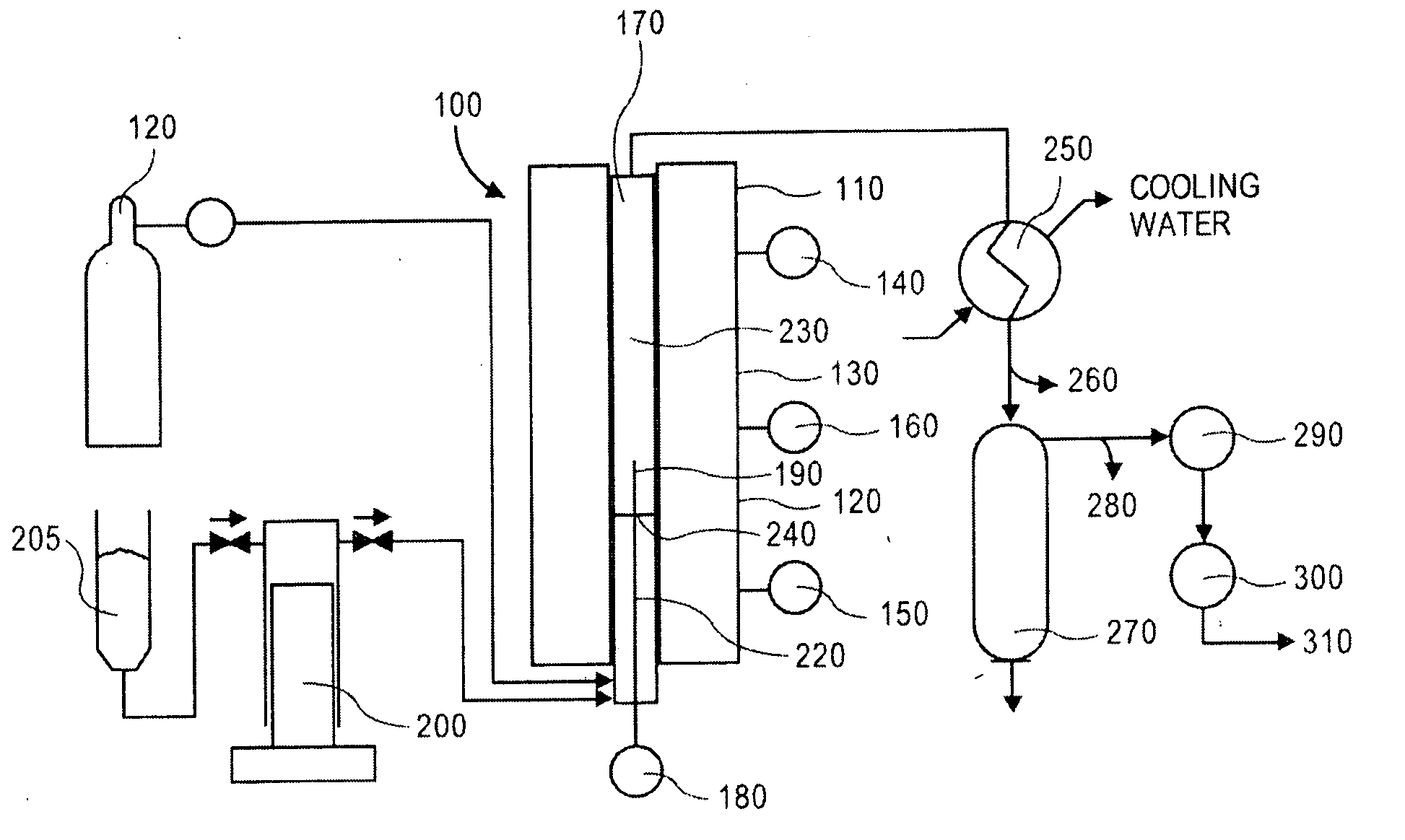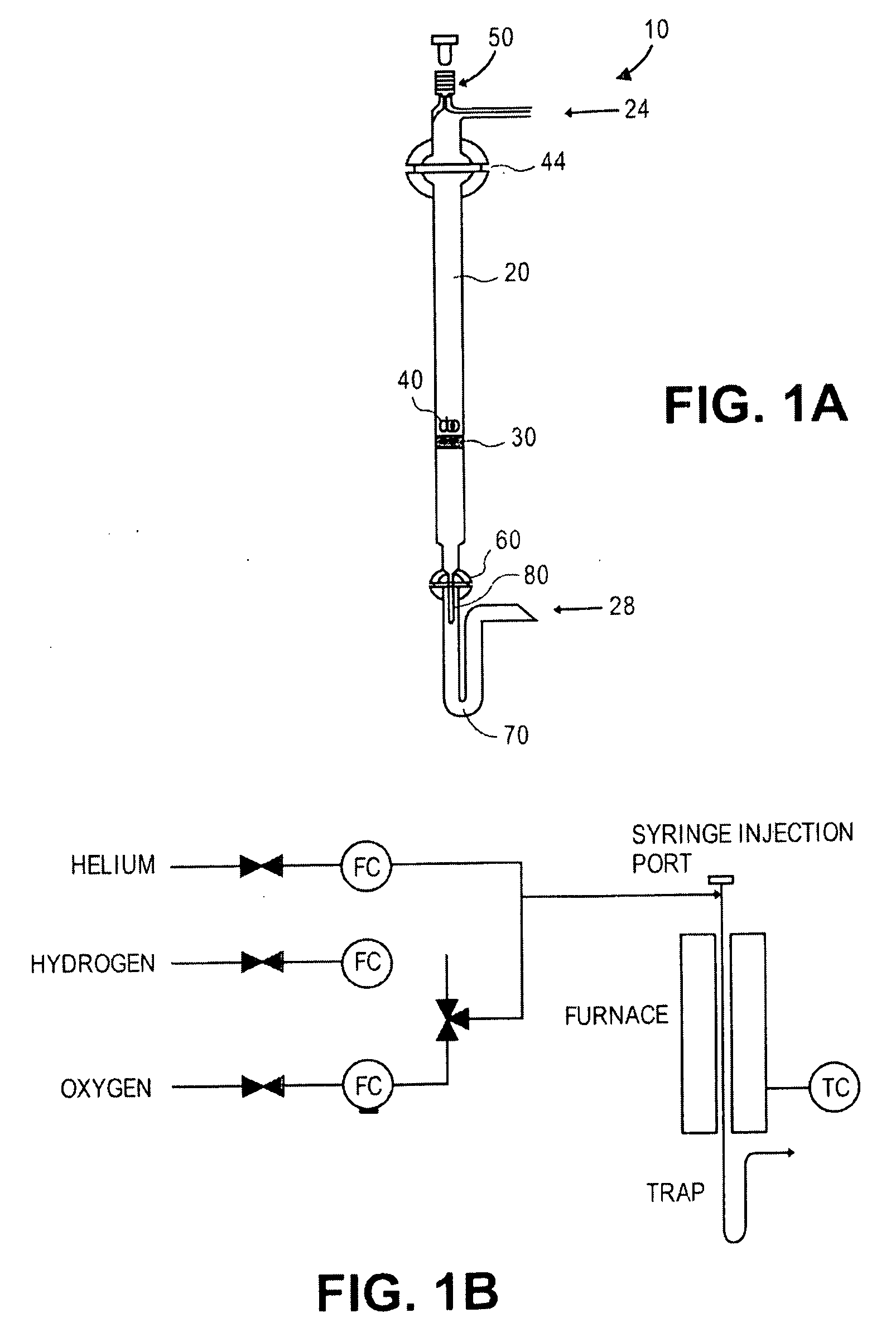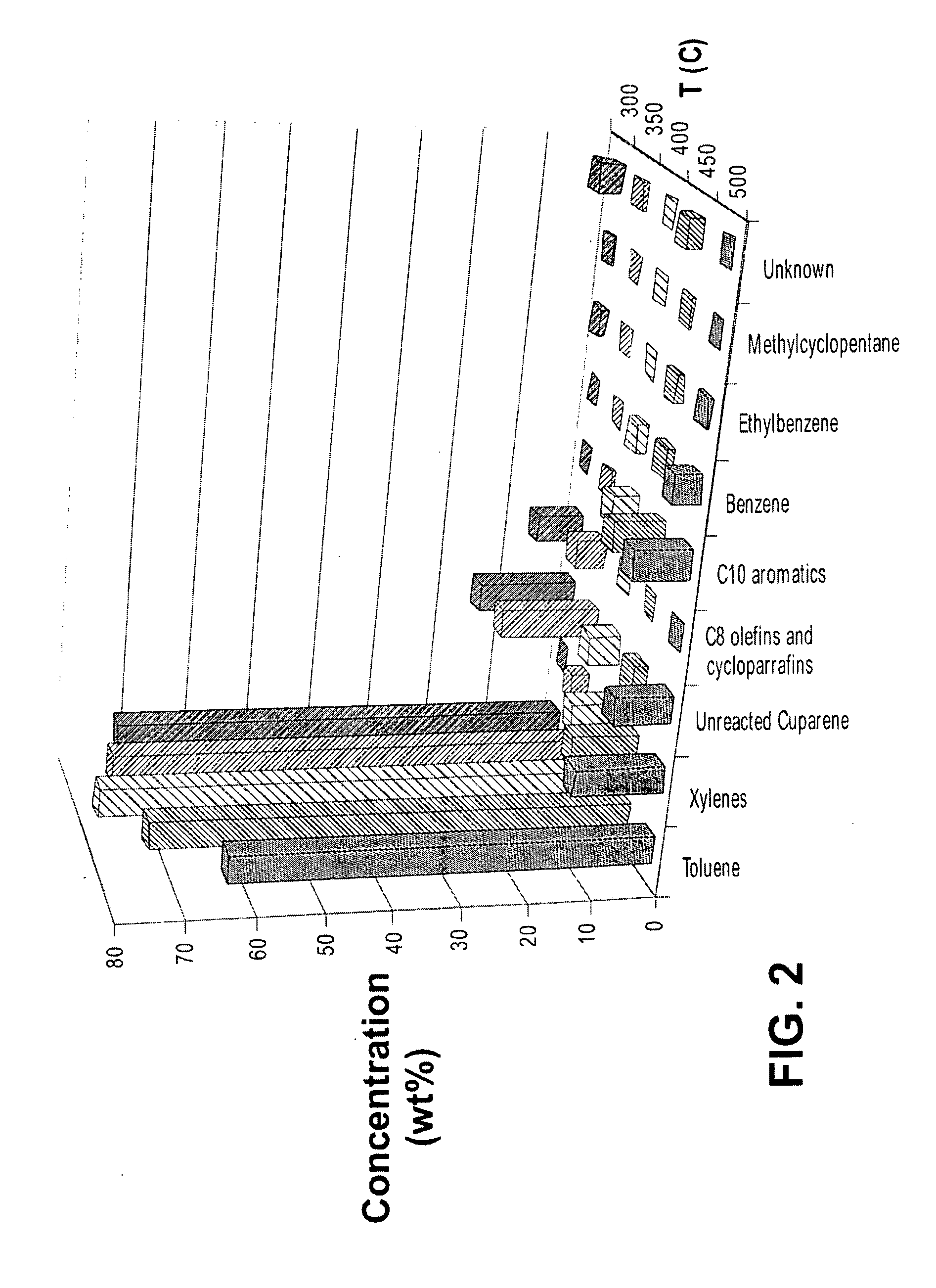Methods of refining hydrocarbon feedstocks
a technology of hydrocarbon feedstock and hydrocarbon oil, which is applied in the field of refining hydrocarbon feedstock, can solve the problems of increasing the concentration of carbon dioxide in the atmosphere, global climate change, and the energy input of ethanol production may exceed the energy output from ethanol combustion
- Summary
- Abstract
- Description
- Claims
- Application Information
AI Technical Summary
Benefits of technology
Problems solved by technology
Method used
Image
Examples
example 1
[0230]Cracking of the sesquiterpene, cuparene, was achieved with the processes provided herein. In this example, a 10-ring molecular sieve catalytic composition was selected to demonstrate the catalytic cracking of cuparene. The zeolite was a ZSM-5 material known as SN27 which has a relatively high alumina content for ZSM-5 type zeolites of about 27 / 1 SiO2 / Al2O3. This material was converted to the proton form by exchange with ammonium cations followed by calcination at about 500° C. in a pulse reactor prior to use.
[0231]A pulse reactor was constructed to study catalytic reactions of the biologically-derived hydrocarbons described herein. Design criteria include minimizing the quantities of reactants necessary to produce reliable results and allowing for evaluation of the products and product distributions. As shown in FIG. 1A, the pulse reactor 10 is constructed of a 30-cm-long quartz tube 20, capable of withstanding temperatures over 1000° C. The quartz tube is equipped with a gas ...
example 2
[0234]LZY-72 is a Union Carbide Y-type zeolite which is often used as a cracking catalyst. The catalytic composition used in this example began with the LZY-72 base which is generally in a sodium form, from which the base was ion-exchanged with NH4NO3 aqueous solution to yield the ammonium form of the zeolite. Upon heating, the ammonium zeolite converts to the proton form with the elimination of ammonia. The proton form of the zeolite acts as a strong solid acid. Y-type zeolites have a 3-dimensional pore network with pore mouths of about 8.6 Å which opens into larger, nearly spherical cages of free diameter about 13 Å.
[0235]A second catalyst, SN27, is a ZSM-5 zeolite base material manufactured by VAW-AG in Germany. It has a SiO2 / Al2O3 ratio of 27 / 1. This zeolite was also supplied in the sodium form, and a similar ammonium exchange procedure followed by heating was used to convert it to a strong acid. ZSM-5 zeolites are characterized by a two-dimensional channel system which is rough...
example 3
[0241]Zeolite beta was obtained from PQ Catalysts (now part of Zeolyst International). The material is known as Valfor CP811 BL-25. It has a SiO2 / Al2O3 ratio of about 25, and was supplied in its acidic (fully protonated) form. The zeolite beta was converted from a loose powder to 20-40 mesh particles prior to loading into a pulse reactor via pressing it into pellets, grinding in a mortar and pestle, and sieving.
[0242]Similar to zeolite Y as demonstrated in Example 2, zeolite beta has a 12-ring, three-dimensional pore system. Unlike zeolite Y, zeolite beta can be synthesized in much higher SiO2 / Al2O3 ratios. This gives rise to a lower density of protonic sites, but each individual site is generally stronger in zeolite beta.
[0243]A process of cracking cuparene was performed in a pulse reactor at catalytic cracking condition and contacting the cuparene with zeolite beta. High cuparene conversions were observed at conditions with temperature as low as 200° C. and toluene was the major p...
PUM
 Login to View More
Login to View More Abstract
Description
Claims
Application Information
 Login to View More
Login to View More - R&D
- Intellectual Property
- Life Sciences
- Materials
- Tech Scout
- Unparalleled Data Quality
- Higher Quality Content
- 60% Fewer Hallucinations
Browse by: Latest US Patents, China's latest patents, Technical Efficacy Thesaurus, Application Domain, Technology Topic, Popular Technical Reports.
© 2025 PatSnap. All rights reserved.Legal|Privacy policy|Modern Slavery Act Transparency Statement|Sitemap|About US| Contact US: help@patsnap.com



